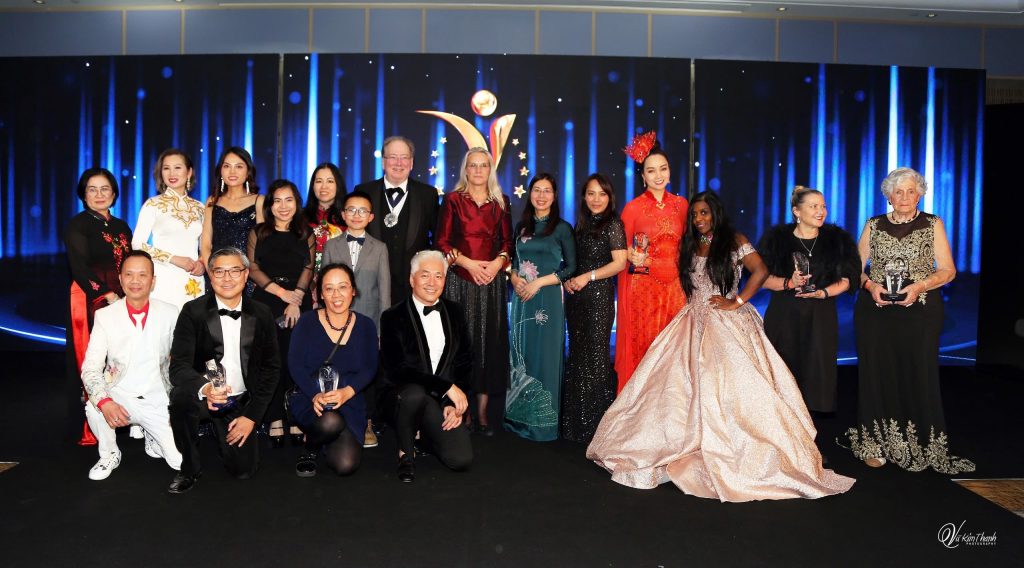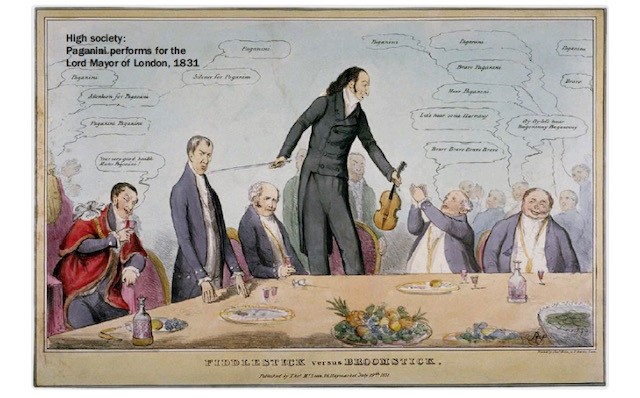I could start to get a bit cranky about achievement awards, but not about this one from Vietnam International Awards. While I related this true story in my speech to the judges this week:

I could start to get a bit cranky about achievement awards, but not about this one from Vietnam International Awards. While I related this true story in my speech to the judges this week:

Ah, how childhood musical infatuations return again and again. I was so excited to receive via email earlier this year a new march for the bagpipe composed by Malcolm McCaig:
Continue reading[Sam Woods, CEO, Prudential Regulation Authority (remarks); Lord Mayor (remarks below); Nikhil Rathi, CEO, Financial Conduct Authority (remarks)]
City Dinner, Egyptian Hall, Mansion House, Thursday, 17 October 2024
The Rt Hon The Lord Mayor of London Alderman Professor Michael Mainelli
Your Excellencies, My Lords, Fellow Aldermen, Mr Recorder, Sheriffs, Chief Commoner, Ladies and Gentlemen,
Continue readingWhat a fantastic evening at the Guildhall! Tonight, in our special gala for LSO Discovery, the legendary Il Cannone – Niccolò Paganini’s 18th-century Guarneri del Gesù violin – was brought to life by violinist Simon Zhu, with Sir Antonio Pappano conducting. 🎻✨
We were also honoured to welcome His Majesty The King, Patron of the LSO, to share in this extraordinary moment. My opening remarks:
Remarks to: the United Kingdom Accreditation Service (UKAS) annual lunch, Tuesday, 15 October 2024, at the Royal Institute of British Architects, by
The Rt Hon The Lord Mayor of London, Alderman Professor Michael Mainelli
Continue readingWilliam Harvey (1 April 1578 – 3 June 1657) was an English physician who made influential contributions in anatomy and physiology. The William Harvey Annual Review is a one-day internal conference that celebrates the most outstanding research activities within the Institute.
Continue reading“Paganini never repeats”, is a tribute to the maestro’s improvisation virtuosity, but also a good reminder that live performances are once in a lifetime. An enormous range of events from this year’s biggest City of London Festival are now available to book online – https://www.musicinoffices.com/cityfestival!

Watch this space as we progress, but start with some BBC background, “The secret lab hidden inside a famous monument“, and some press “Could the Monument really be used to show the Earth revolves around the Sun?“.
We had a fantastic event at Guildhall Art Gallery sharing the results. Here’s the presentation:
Remarks to: “Measuring the Monument”, Guildhall Art Gallery, Thursday, 31 October 2024 by The Rt Hon The Lord Mayor of London Alderman Professor Michael Mainelli
“Fellow Alderman, ladies and gentlemen…
A very warm welcome to Guildhall, as we reveal the results of our Measuring the Monument experiment series. As the 695th Lord Mayor of the City of London – or, as I like to put it, the elected head of the world’s oldest democratic worker’s and residents’ cooperative. I am delighted to be joined by this team of scientists this evening, here in the City of London Corporation’s historic headquarters.
The theme of this mayoralty is Connect To Prosper, celebrating the many knowledge miles which flow through our Square Mile – the world’s coffee house. Over 40 learned societies, 70 higher education institutions, and 130 research institutes exist in and around the City of London, making this the world’s most successful concentration of interconnected knowledge networks – where science and finance meet to find and to fund the solutions to global challenges.
Do you know what Sir Isaac Newton – who spent many years in London as Warden of the Royal Mint – said when he was asked what was the greatest of his achievements? The discovery of gravity – he said it helped him keep his feet on the ground.
For Connect To Prosper, we have launched six initiatives:
1. The Ethical AI Initiative, using ISO standards – through the ethical AI course, the Walbrook AI Accord, and the Coffee House Consensus.
2. The Smart Economy Networks Initiative, using international X-Road standards for smart data.
3. The Constructing Science Initiative, for building life science laboratories.
4. The Sustainable Finance Initiative, reinforcing carbon markets.
5. GALENOS, accelerating global mental health research.
6. And the Space Protection Initiative, using space debris retrieval insurance bonds to deal with space junk and keep space clutter-free.
Which reminds me… scientists in space got so bored of watching the Earth rotate, that after 24 hours, they called it a day.
Science is a common thread running through our initiatives, and it is central to our success as a problem-solving centre, which is why we have run a series of scientific experiments this year, including the time dilation experiment at 22 Bishopsgate, a microplastics survey, a seagrass carbon sequestration study, a pollinator count … and – of course – Measuring The Monument.
The Monument is well known as a commemoration of the Great Fire. What is not always known by many of those who walk by on their way to work, or who climb its steps to enjoy the views over London, is that it was also designed as a scientific instrument.
The view at the top of the Monument is famous, but the view from the bottom, less so. Christopher Wren and Rober Hooke, both Fellows of the Royal Society, successfully persuaded the Court of Aldermen to pay to build a tower to commemorate the fire – rather than a simple plaque.
You could say the City Aldermen fell for it Hooke, line and sinker.
They designed the Monument as a giant zenith telescope, so that when the doors at the top were opened, an observer in the underground observation chamber at the base could measure the changes in position of the stars overhead throughout the year. For us on earth, it appears that the stars have moved – though of course, it is the earth that has moved around the sun – which is what Hooke and Wren were hoping to demonstrate.
Do you know how astronomers organise an experiment on that scale? They plan-et.
Unfortunately, their expensive giant telescope – provided courtesy of the City – didn’t seem to work, as Hooke was unable to measure a change in position in the star he chose – Gamma Draconis. Christopher Wren’s nephew, James Hodgson, blamed the bad vibrations from the traffic on Fleet Street.
We decided to deploy a team of experts, using modern technology, to investigate this 350-year-old mystery, asking:
On this Halloween evening, what would we be able to tell the ghosts of Christopher Wren and Robert Hooke if they were with us now? Tonight’s speakers will reveal the answers.
I would like to express my heartfelt thanks to the Measuring the Monument Working Group – from City St George’s, City Optotrech, Imetrum, and the University of Portsmouth – for making this experiment possible; and to the Worshipful Company of Scientific Instrument Makers for very generously supporting tonight’s event.
Now, it gives me great pleasure to hand over to Professor Philip Thomas, Immediate Past Master of the Scientific Instrument Makers.
T0 paraphrase Mr Spock, may you Connect and Prosper.
Thank you.”